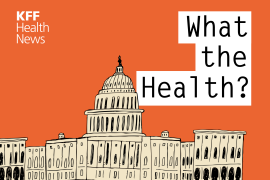Arizona Medicaid Expansion Could Begin Enrollment in April
The Arizona Daily Star reports that a plan to expand Medicaid eligibility under the Arizona Health Care Cost Containment System, Arizona's Medicaid program, to every person at or below the federal poverty level could begin enrollment as early as April (Erikson, Arizona Daily Star, 2/4). In November, voters approved Proposition 204, a measure that requires the state to spend money from the national tobacco settlement to expand Medicaid eligibility. Under the state's approach recently approved by the federal government, AHCCCS will cover individuals whose eligibility is categorically linked to Medicaid (such as parents of Medicaid-enrolled children) up to 100% of poverty under an amendment to the state's Medicaid plan. The state has also been granted a waiver to cover individuals whose eligibility is not linked to Medicaid (such as single male adults and women who are not pregnant) up to 100% of poverty as well. The state's current eligibility level for non-categorically linked individuals is 34% (Kaiser Daily Health Policy Report, 1/19). The plan, called Healthy Arizona, is expected to cover 185,000 adults, including 65,000 working poor whose children are enrolled in AHCCCS or Kids Care, the state's CHIP program; 74,000 seniors and disabled Medicare beneficiaries who have difficulty paying for prescription drugs; and 45,000 childless adults who earn too much to qualify for AHCCCS but cannot afford private insurance.
Advocates Pleased, Hospital Concerned
Advocates for the poor have hailed Healthy Arizona as a way to help both poor residents and seniors whose Medicare+Choice managed care plans have cut benefits or left the market. In addition, the program will result in the state receiving an estimated $2.5 billion more in federal reimbursements over the next five years. Hospitals, however, are concerned that the program does not address the problem of low provider reimbursement rates. According to John Rivers, president and CEO of the Arizona Hospital and Healthcare Association, little is known about the population that will enter Healthy Arizona, and it's "little more than a wild guess at this point [to try to] determine what the impact on the health care community will be." The Daily Star notes, however, that covering more poor residents "means fewer patients will come into clinics and hospitals with no insurance or ability to pay. That in turn could reduce the need for facilities to pass along their costs to patients with insurance." In addition, AHCCCS will now cover many charity patients who hospitals previously treated without compensation. AHCCCS spokesperson Frank Lopez suggested that Arizona hospitals will receive $500 million of the additional $2.5 billion in reimbursements that will come as a result of the program (Erikson, Arizona Daily Star, 2/4).






